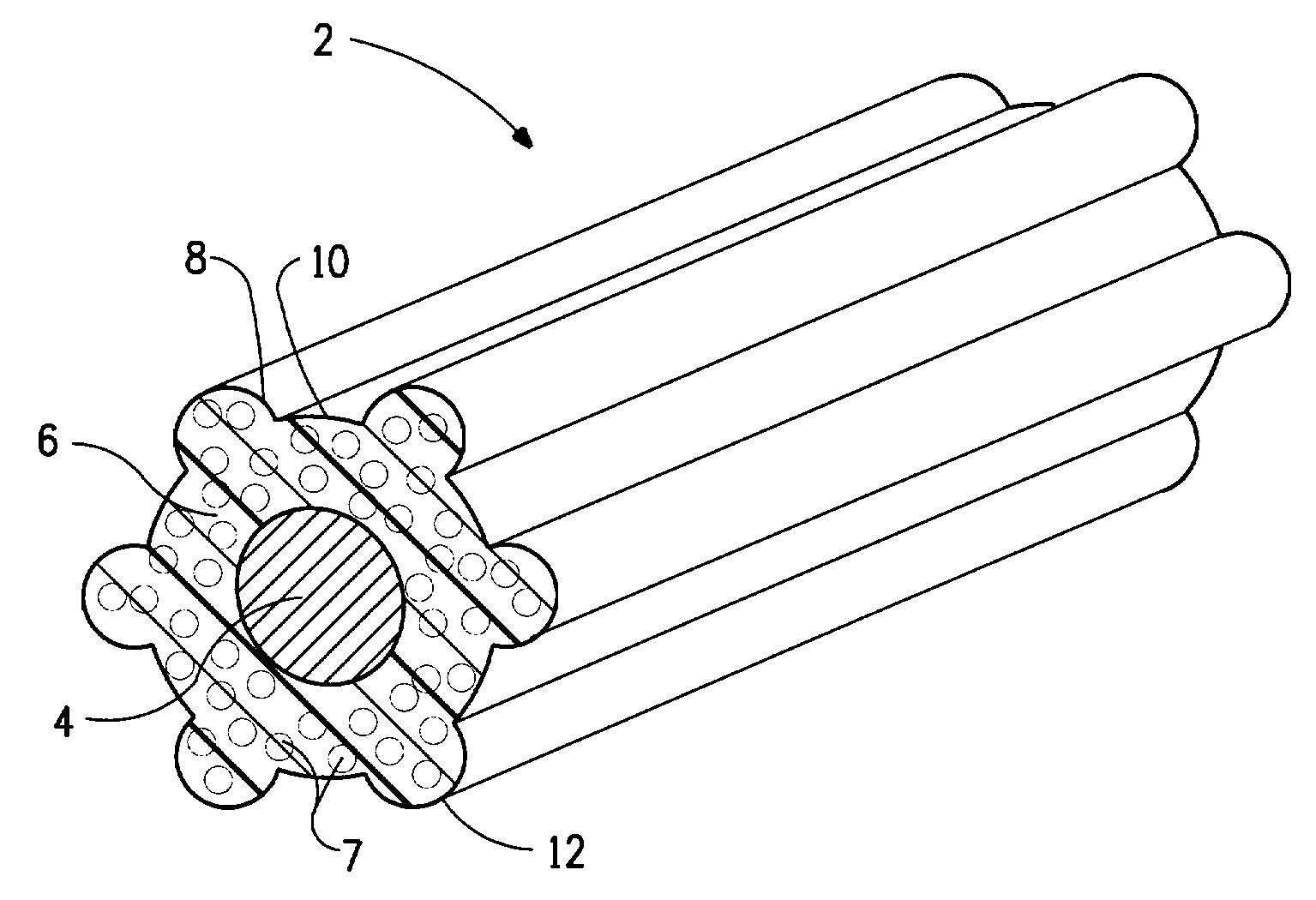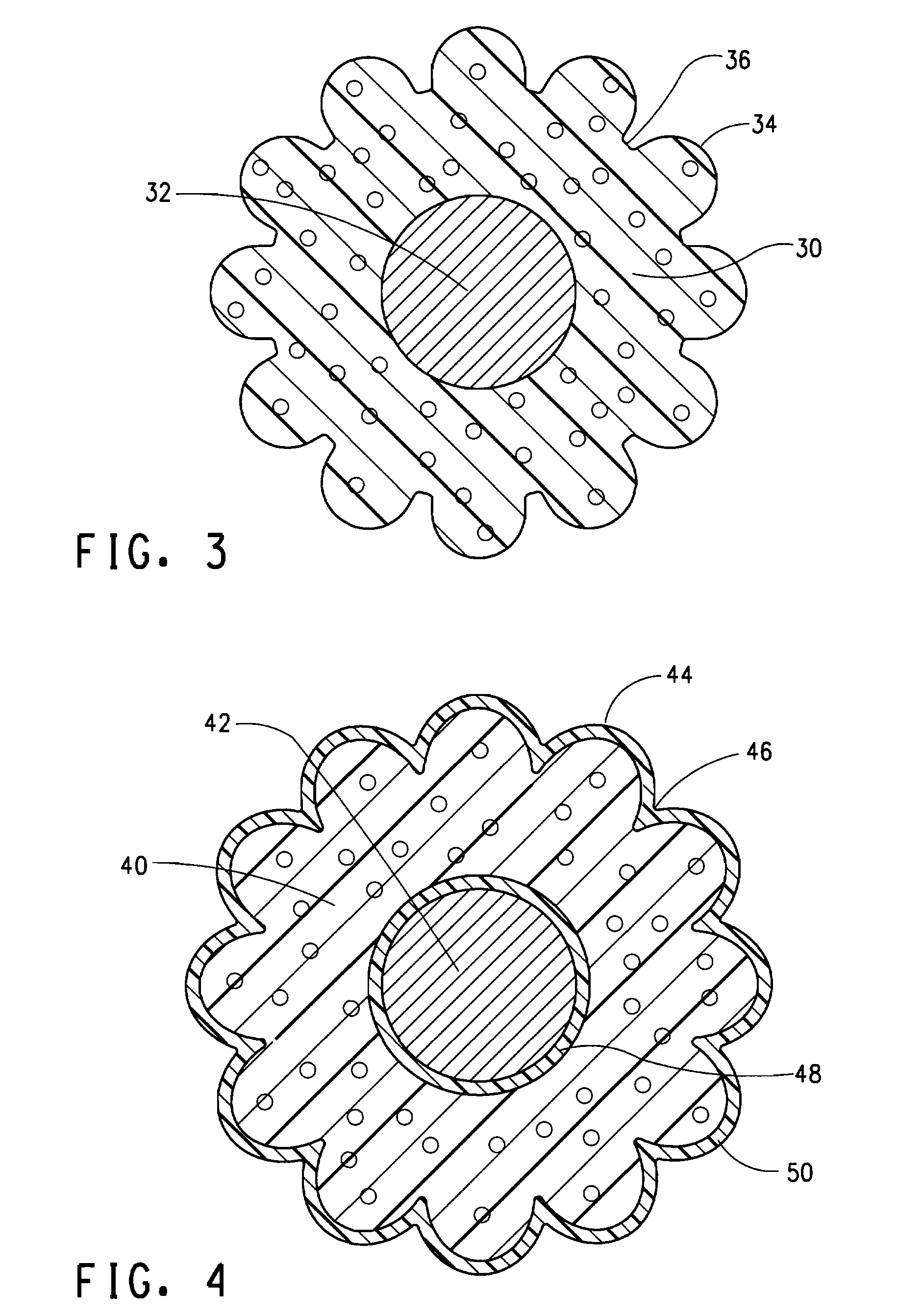Conductors Having Polymer Insulation On Irregular Surface
- Summary
- Abstract
- Description
- Claims
- Application Information
AI Technical Summary
Benefits of technology
Problems solved by technology
Method used
Image
Examples
example 1
[0055]The foamed polymer insulation of this Example resembles that of FIG. 2, wherein the 12 peaks are each 4 mils (0.1 mm) wide and 4 mils (0.1 mm) high and the overall insulation thickness is 11 mils (0.28 mm). The thickness of the insulation at the inner circumference defined by the valleys is 8 mils (0.2 mm). The diameter of the insulation from peak top to peak top is about 45 mils (1.143 mm). The peaks occupy about 41% of the inner circumference of the polymer insulation defined by the valleys.
[0056]When this polymer-insulated conductor is twinned with another of the same polymer-insulated conductors at a twinning rate of 2000 turns / min to form a lay of 0.3 in (7.6 mm) for the twisted pair, a peak of one insulation nests in a valley of the other insulation as a result of the back-twisting of the individual polymer-insulated conductors prior to twinning. The impedance of this twisted pair is 2 ohms greater than for a twisted pair of uniform thickness of a greater weight of polym...
example 2
[0058]The foamed polymer insulation of this Example resembles that of FIG. 3, and is similar to the dimensions of the Example 1 embodiment except that the peaks are 6 mils (0.150 mm) wide. The peaks occupy about 62% of the inner circumference of the polymer insulation defined by the valleys. The impedance improvement for this polymer insulation in a nested twisted pair was 3 ohms as compared to a twisted pair of polymer insulation of the same weight but having a uniform thickness
example 3
[0059]The foamed polymer insulation of this Example resembles that of FIG. 4, except that the peaks are 8 mils (0.2 mm) wide and 5 mils (0.13 mm) high and the insulation thickness from inner surface to the valleys (where the peaks interconnect) is 6 mils (0.150 mm).
PUM
| Property | Measurement | Unit |
|---|---|---|
| Fraction | aaaaa | aaaaa |
| Fraction | aaaaa | aaaaa |
| Fraction | aaaaa | aaaaa |
Abstract
Description
Claims
Application Information
 Login to View More
Login to View More - R&D
- Intellectual Property
- Life Sciences
- Materials
- Tech Scout
- Unparalleled Data Quality
- Higher Quality Content
- 60% Fewer Hallucinations
Browse by: Latest US Patents, China's latest patents, Technical Efficacy Thesaurus, Application Domain, Technology Topic, Popular Technical Reports.
© 2025 PatSnap. All rights reserved.Legal|Privacy policy|Modern Slavery Act Transparency Statement|Sitemap|About US| Contact US: help@patsnap.com



